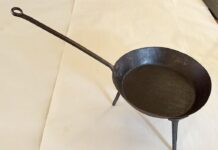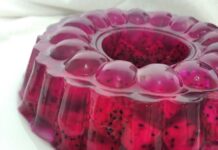NEW YORK — Cultivating beautiful blooms is a popular pastime for gardeners near and far. While gazing at a yard full of vibrant colors or enjoying the aroma of freshly cut blooms is enough for many gardeners, others may want to embrace a long-enduring tradition — growing edible flowers.
Cooking with edible flowers is a trend that has endured for centuries. According to Fleurs Gourmandes, the first recorded history of edible flowers occurred in 140 BC. Use of calendula in salads dates back to the ancient Greeks and Romans, and Victorian-era candied flowers and flower-encrusted sweets took edible flowers to new heights.
Today, nothing may make a meal seem more gourmet than the inclusion of flower petals in the recipe.
Safety first. Of course, before delving into the expanded world of cooking using edible blooms, some notes of caution should first be mentioned.
Avoid flowers that may have been sprayed with fungicides, herbicides or insecticides. To verify safety, only use edible flowers grown specifically for this purpose, not flowers picked from roadsides or from landscapes.
Secondly, remember that not all flowers are edible. Some can be poisonous or cause severe gastrointestinal upset when consumed. That means all flowers should be carefully researched prior to experimenting with them in the kitchen.
Where to start. To begin growing — and eating — edible flowers, refer to this list of varieties deemed safe and be careful to double-check against allergies and any interactions with medications prior to use.
- Allium: These are blossoms from the allium family, which include garlic, chives and leeks. These flowers can be used to add flavor to foods.
- Basil blossoms: It may be customary to pinch off the blossoms of basil, which come in colors from white to lavender in order to stimulate growth of the leaves of the plant. However, the blossoms, which are more mild than the leaves, can be tasty as well.
- Calendula: Sometimes known as “poor man’s saffron,” this yellow flower in the marigold family can taste like saffron when it’s sauteed. Uncooked, calendula can have spicy notes that add variety to salads and garnishes.
- Chamomile: This plant features small, daisy-type flowers that can be used in treats and teas.
- Cilantro: The flowers from the cilantro plant can be eaten, just as the leaves and the seeds that form the spice coriander.
- Fennel: Just like the plant itself, the flowers of fennel have a subtle licorice flavor.
- Hibiscus: Hibiscus blooms are famously used in hibiscus tea, which is tart and cranberry-like.
- Lavender: The sweet, perfumed taste of lavender works in cocktails and desserts.
- Marigolds: These tiny flowers may be used in vegetable gardens to repel animal and insect pests. Blossoms have a fresh citrus taste that can be used in cooking.
- Pansies: These vibrant early bloomers can take on a wintergreen flavor and look beautiful when glazed on cakes and other desserts.
- Roses: Beautiful to behold, rose petals can lend a subtle, fruity flavor to many different foods as well.
- Zucchini: The blossoms from this squash, which have a slightly sweet taste, can be enjoyed in many different ways. Some people batter and fry the blossoms, while others may stuff them with herbs and cheeses.
















